To let people know it exists, they had to take it to a famous museum, a few kilometers downstream, to the Mart in Rovereto, and organize an exhibition all for it, after a restoration. Otherwise, Bernardo Strozzi’s altarpiece would have continued to stay hidden, away from the crowds, protected in its little church in the mountains, in Tiarno di Sopra, a thousand inhabitants scattered in a clump of houses with sloping roofs at the end of the Ledro Valley. Or at the beginning, if you get here from Storo by crossing the Ampola Pass. You climb up amidst the sharp, threatening profiles of the Giudicarie, proceed for a few kilometers amidst these green-covered boulders, in the middle of nowhere, following the hairpin bends of the Loppio state road, kilometers of woods, firs, rock walls, rockfall nets, the mountain ridges that cover your view of what lies behind and seem put there on purpose to bar your way. Then, the road begins to descend. The curves become gentler. The woods begin to become less dense and give way to meadows: first a few small expanses of grass along the sides of the road, then larger and larger, all the way to Lake Ampola and beyond. They are like the first flashes of blue after a stormy afternoon. And finally here it comes down, the mountains open up, the valley comes, it comes like the sun at the end of the storm, like a happy ending to a tormented dream. The first houses of Tiarno di Sopra tell you that the journey is over. You imagine what the travelers of old must have felt, when there were no means of transportation, when crossing the Alps was a dangerous undertaking that required days of walking without knowing what would happen to you during the journey. And can you imagine what they must have felt at the sight of the houses after the mountains. A sense of liberation.
Tiarno di Sopra has a twin hamlet looking down on it from just below. It is called, of course, Tiarno di Sotto, and just over seven hundred people live there. Once, in the Middle Ages, the inhabitants lived further up the mountain, around the little church of San Giorgio, clinging to the top of a hill overlooking the two villages from above: then, for some reason, they decided to move down, forming the two villages, which are less than a thousand meters apart. And in ancient times they must not have been so different from how we see them today. Two villages with stone houses in the middle of meadows, far from all the big centers: only in the nineteenth century was first opened the axis that connects the Ledro Valley to Storo, and then the vertiginous Ponale road, the one that leads to Lake Garda, today rendered useless by the tunnels of the state highway and turned into a path for tourists. With the opening of the new roads, the valley was connected to the rest of the world. And a few years later, in 1866, it would find itself at the center of Garibaldi’s invasion of Trentino: Garibaldi wanted to open the road to Trento by passing through the middle of these forgotten mountains, and he had been right. Having passed the Giudicarie, taken the fort of Ampola, defeated the Austrians at Bezzecca, the way to Trent was paved. However, except for this episode, for centuries the Ledro valley had remained isolated, and nothing much memorable ever happened in these parts. At most a few passage of armies, but nothing of those things that make one write dense pages in history books. The most exciting events that the valley’s archives record in previous centuries are the border disputes among the inhabitants. There is even one between those from Tiarno di Sopra and their neighbors from Tiarno di Sotto. Life, then, must have flowed quietly. Yet these two sheltered hamlets have a singular feature: their churches are filled with important works. Works that no one would imagine finding in the middle of the mountains of a side valley of Trentino. Works worthy of the churches of a big city.
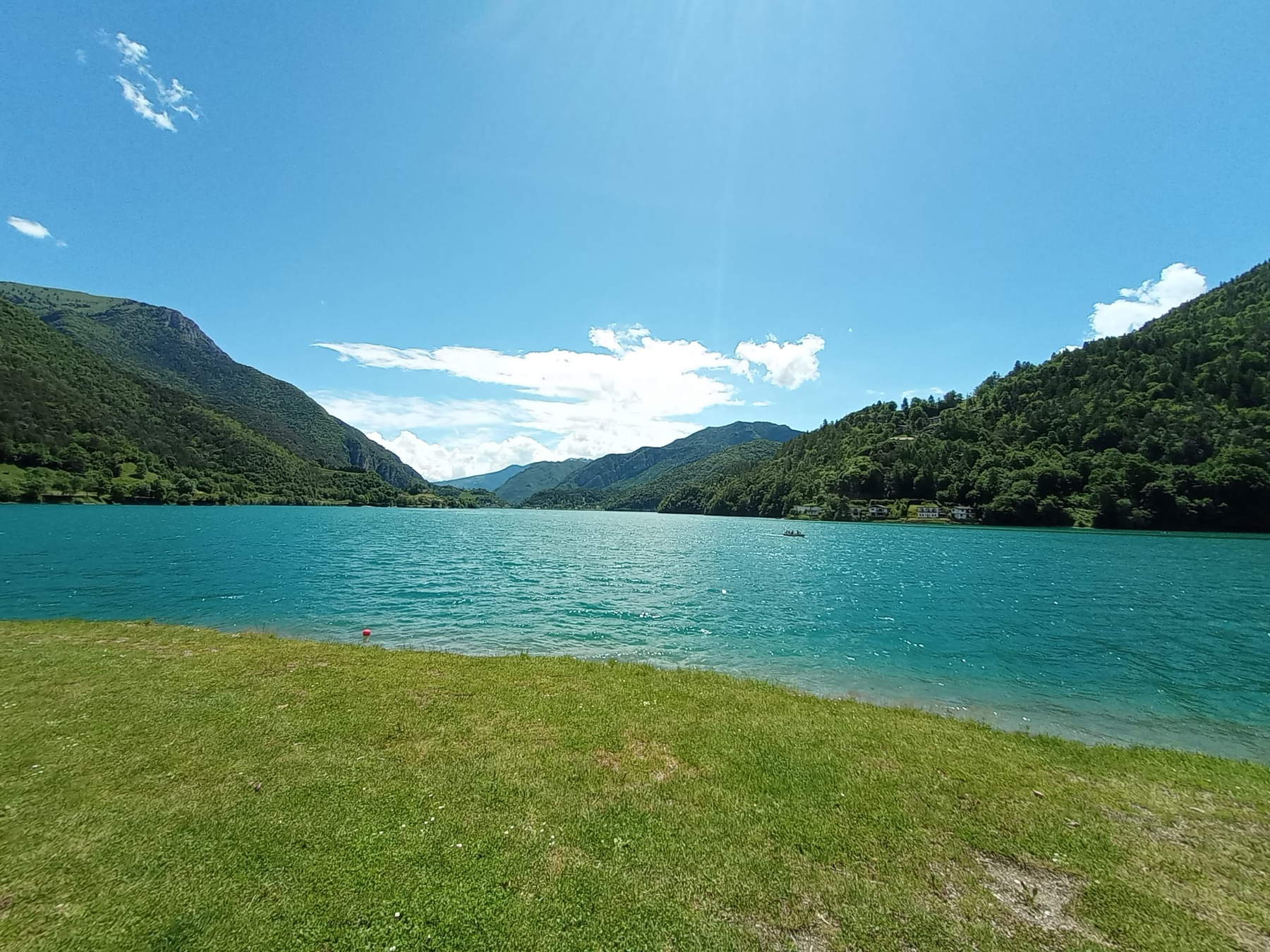

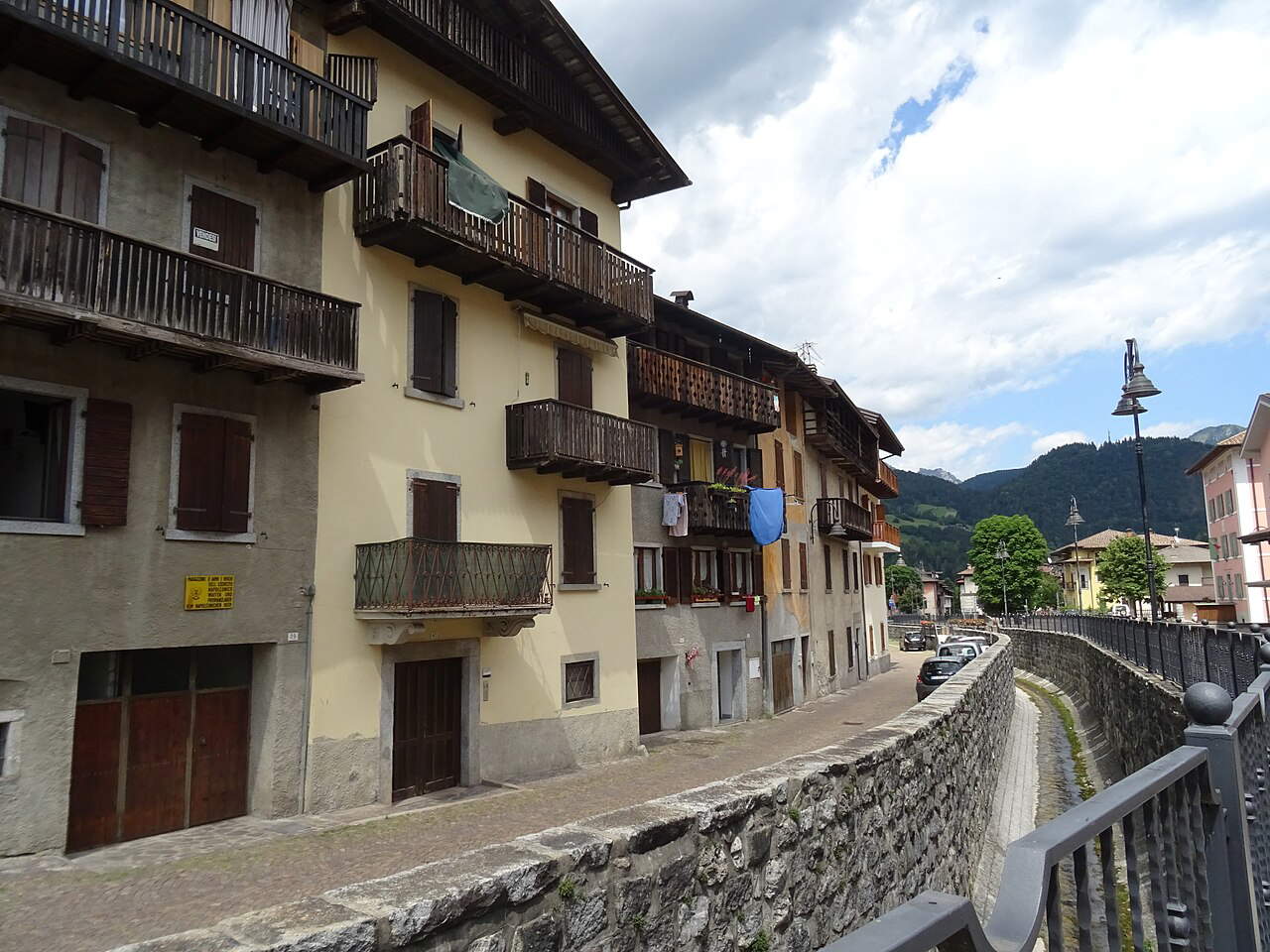
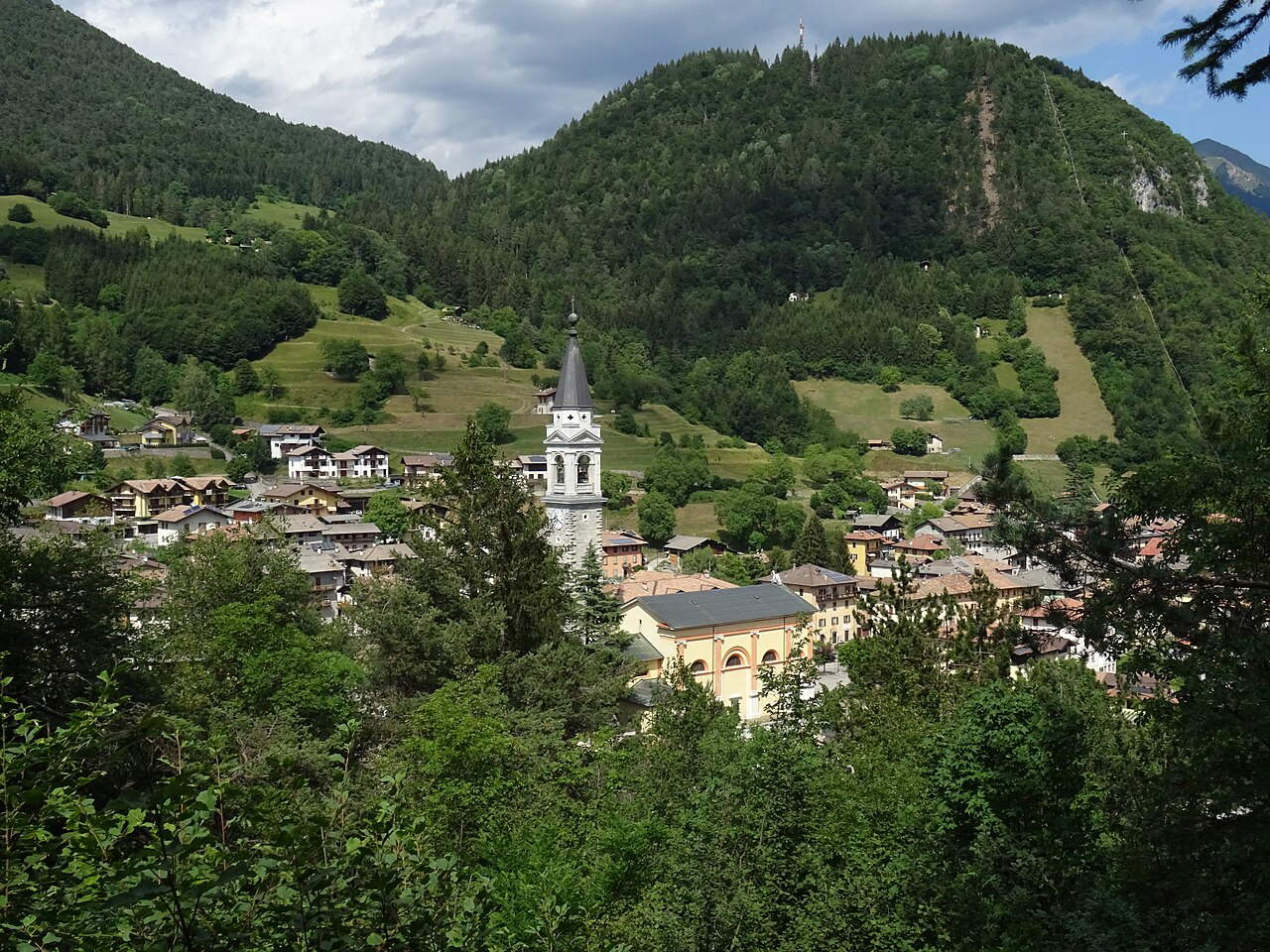


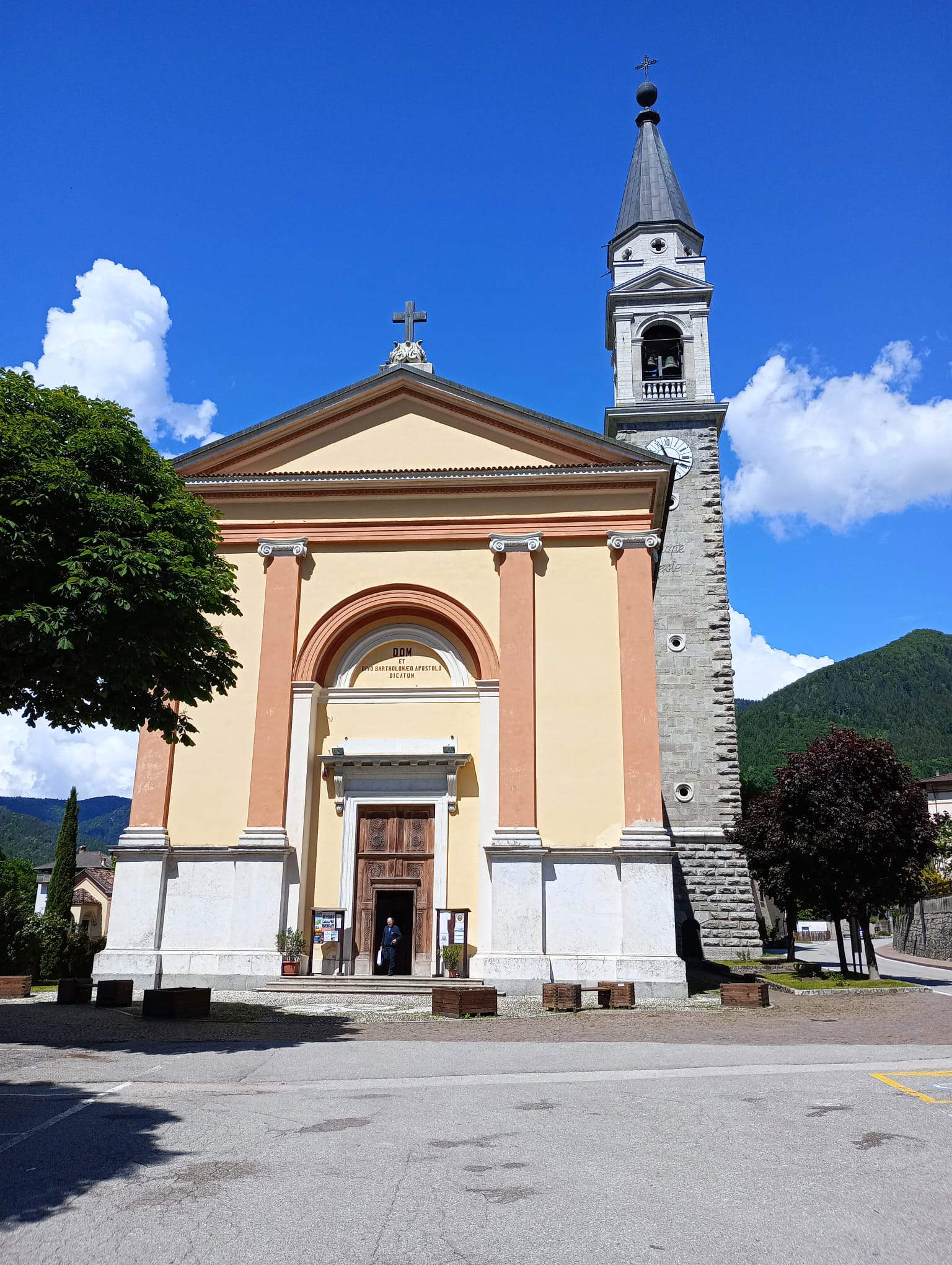
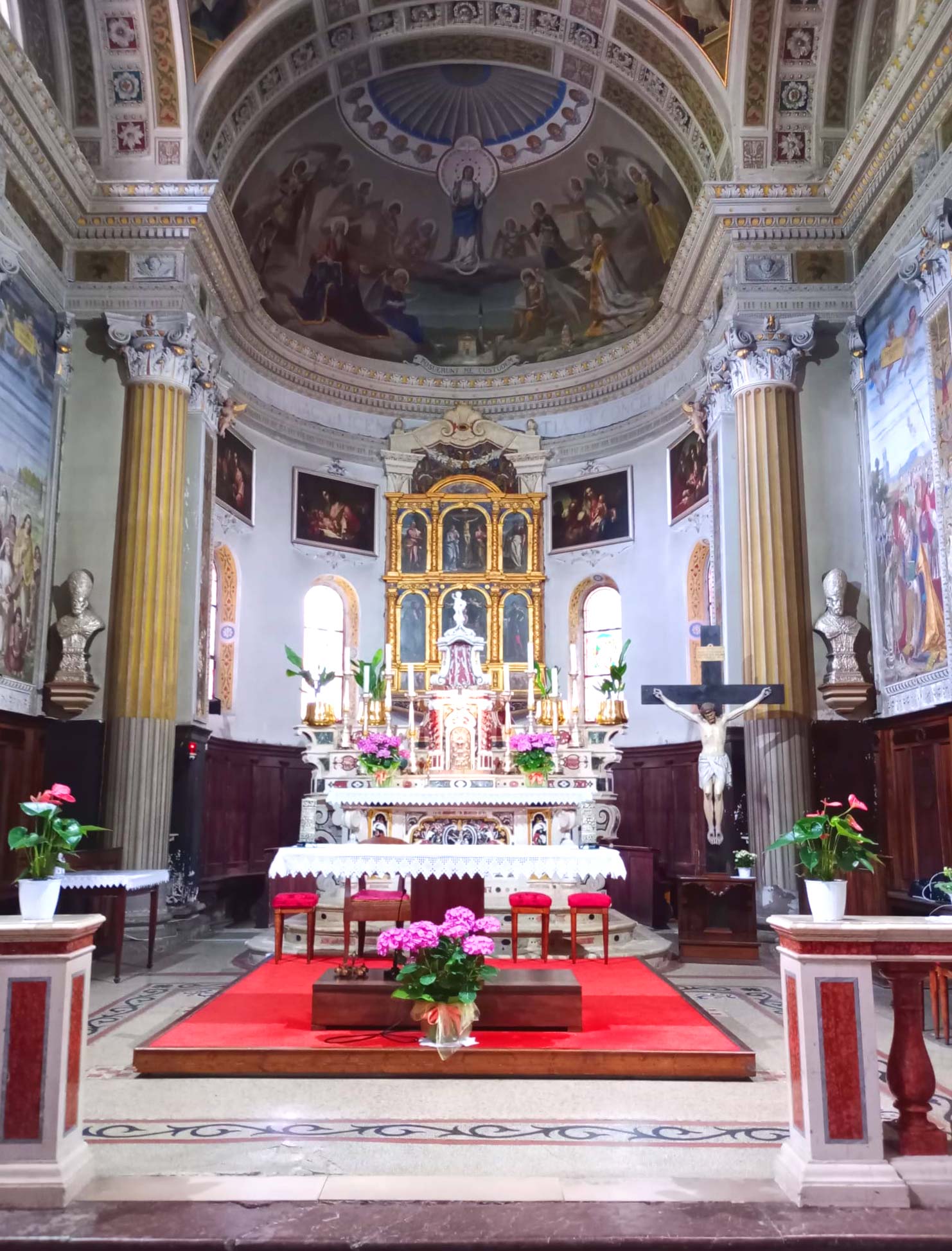
There is, for starters, Bernardo Strozzi’s altarpiece, which depicts a Madonna in Glory with Baby Jesus and a theory of saints: Peter in the foreground, then Bartholomew, Simon and Anthony Abbot further back, and in the abyss the portraits of the two patrons. A spectacular painting, one of the Genoese painter’s most inspired achievements, cited in all monographs. A blue dream enlivened by the hues of the Virgin’s cloak and Saint Peter’s robe: a shimmering ultramarine of overflowing modernity, unparalleled in Bernardo Strozzi’s production. At the Mart exhibition they had placed the altarpiece near a work by Yves Klein, to say. That is, close to the inventor of the world’s most famous blue. An altarpiece so important that it marked, it was written, the beginning of Baroque painting in Trentino. Set within a black altar that enlivens and enhances its colors, an altar built with the dark marbles extracted from an ancient quarry near Lake Ampola, evidently small and little exploited since no one remembers it anymore. But there is more, too, in the small church of Saints Peter and Paul: a Christ on the Cross with Mary Magdalene formerly assigned to Bernardo Strozzi, but later given by Camillo Manzitti, one of the greatest scholars of the Genoese priest, to the most faithful of his pupils, the Paduan Ermanno Stroiffi, an artist who worked extensively between Venice and Mantua. There is a Baptism of Christ by one of the most daring German painters of the seventeenth century, Joseph Heintz the Younger, a sort of Bosch of Bavaria who here produces a composition that is rather compassed and regular in the lower register, but swirling and eventful at the top, with the appearance of God amidst a whirlwind of angels and dazzling light. There are even two works by Andrea Michieli, better known as Andrea Vicentino, who was among Tintoretto’s most talented collaborators, and who painted for Tiarno di Sopra a Madonna and Child Enthroned, accompanied by two musician angels and four saints, namely Rocco, Peter, Sebastian and Bartholomew, and a Madonna of the Rosary with St. Dominic, St. Peter the Martyr, St. Catherine, St. Agatha, St. Lucy and St. Apollonia. According to documents, in the past the church was also supposed to have been adorned with works by Jacopo Bassano, of which, however, we have no more news.
The surprises then continue in Tiarno di Sotto, in the church of San Bartolomeo. The one “with the second highest bell tower in Trentino,” locals are keen to point out, and they are particularly proud of that seventy-two-meter-high nineteenth-century flagpole. Inside is everything. If you look up you will encounter, a little in the dark because the church’s lighting does not help, an interesting Last Supper, the only known work by an enigmatic painter, a certain Ferdinando Valdambrini, an artist perhaps of Lombard origin, who bears the same name as’a musician whom seventeenth-century documents refer to as “Roman,” and who some believe may be the same person, since our painter also signs himself “Romanus” in the large painting of Tiarno di Sotto. It is a work with a somewhat retro taste, one might say: it is dated 1666, but it turns its gaze backward, to 16th-century painting, to the season of the Venetian Renaissance, to the compositions of Tintoretto, complete with direct quotations. And then, in the same church, before arriving at the high altar, it lingers on an altarpiece by Martino Teofilo Polacco (which, however, was once at the Cathedral of Trent), on a Descent of the Holy Spirit that is perhaps the work of Ignazio Unterbeger, on the ceiling decorated in the early twentieth century by the Mantuan Agostino Aldi, until arriving at the spectacular Venetian polyptych of 1587, a’work whose author still eludes us, but it will suffice to mention that it was long attributed to Tintoretto himself to have proof of the quality of this altar machine that one would never expect to find in the church of a village hidden in the mountains.
It is a rare concentration of works of art for two mountain villages that together make less than two thousand inhabitants. Those who know the artists scattered in the two churches cannot help but notice that all the works are linked by a common element: they were all painted by artists who, at some point in their lives, were in Venice. One learns then that in ancient times this valley, and these two villages in particular, enjoyed a special connection with the lagoon. At first it was a political link: in the 15th century, when the Ledro valley and Riva del Garda were conquered by the Venetian Republic, the people of Rivano did everything they could to assert their rights over the valley, trying to obtain from the Serenissima the right to administer ordinary justice on the Ledro territory. A fact that, historian Silvano Groff explained, “implies a series of broader political and economic motivations, linked to the very role of the city with respect to the contado.” The valley, however, managed to maintain a certain autonomy, in spite of the Rivanians’ demands. And then, the link from political became economic, as the valley proved to be an important exporter of raw materials that were crucial to Venice. From the surroundings of Lake Ledro arrived in the lagoon skins, wools and foodstuffs, but above all timber and pitch for the arsenal: timber for building boats, and pitch, the “pegola” as the Venetians called it, which was used for the caulking of ships, that is, the set of operations that made it possible to waterproof the hulls, the shrouds, and the ropes. It was such a valuable commodity that it deserved a mention in Dante’s Commedia , in Canto XXI of Inferno, where pitch serves to give the reader a useful term of comparison to get an idea of the bedlam in which the barters are plunged: “Quale nell’arzanà de’ Viniziani / bolle l’inverno la tenace pece / a rimpalmare i legni lor non sani, / ché navicar non ponno in quella vece / [...] / tal, non per foco ma per divin’ arte, / bollia là giuso una pegola spessa, / che ’nviscava la ripa d’ogne parte”.
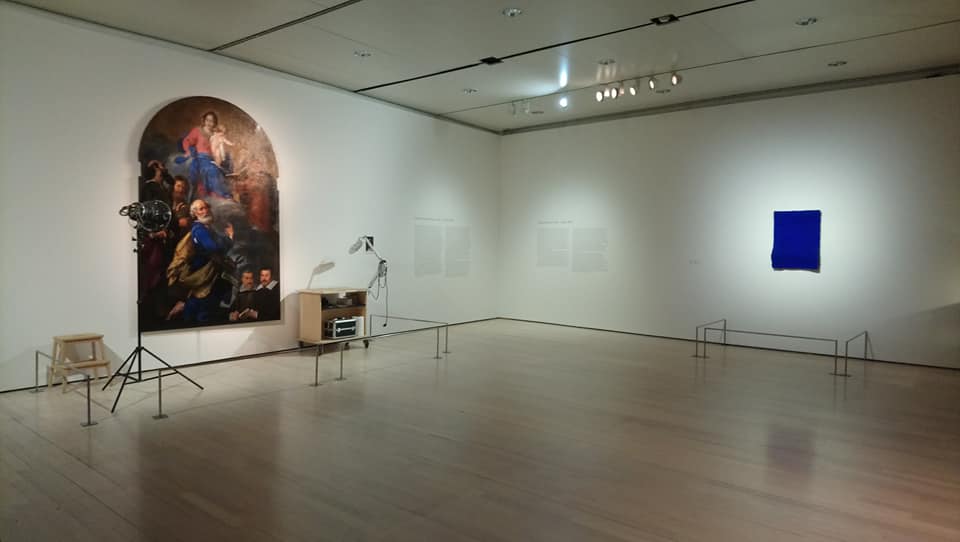
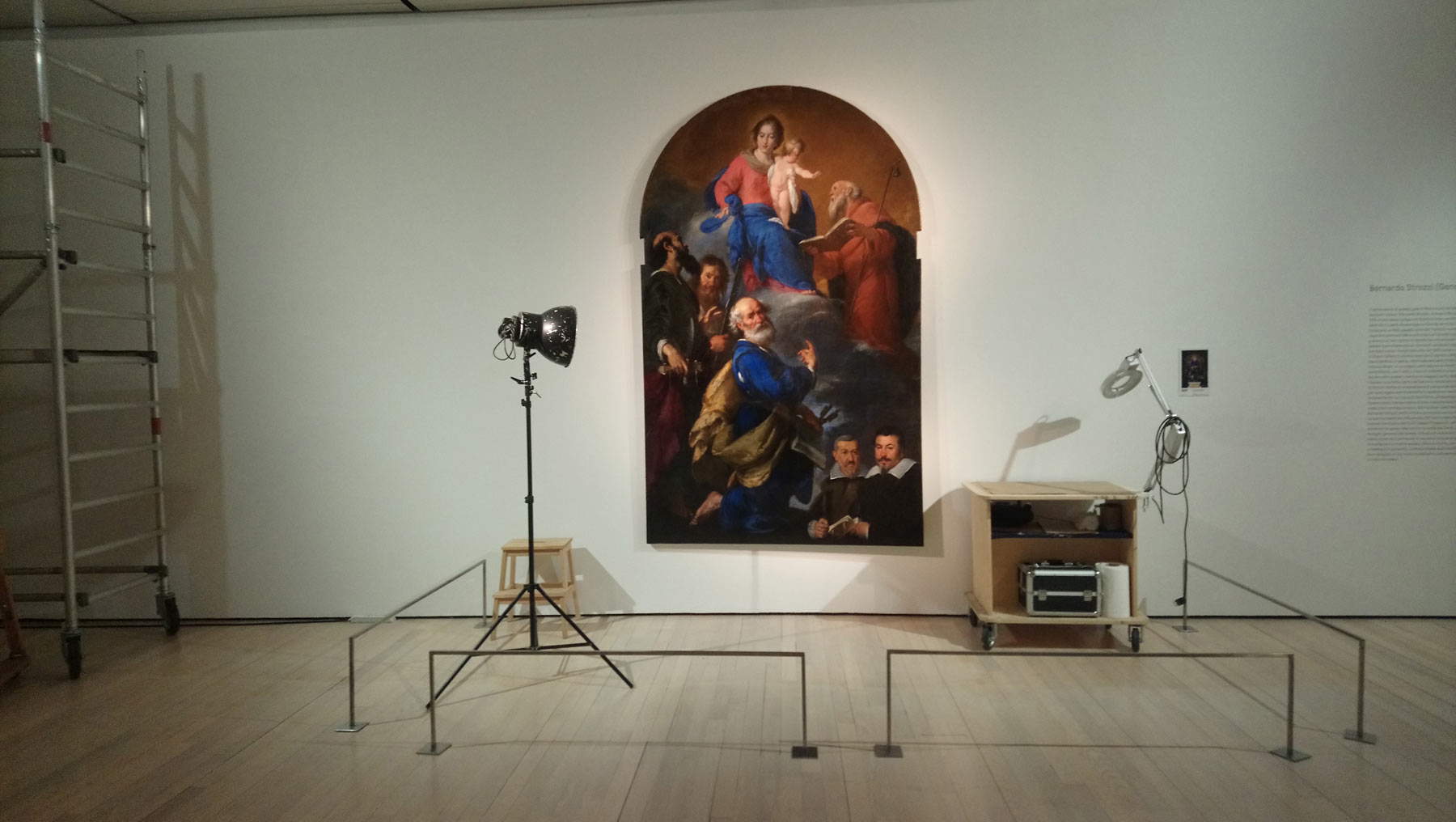


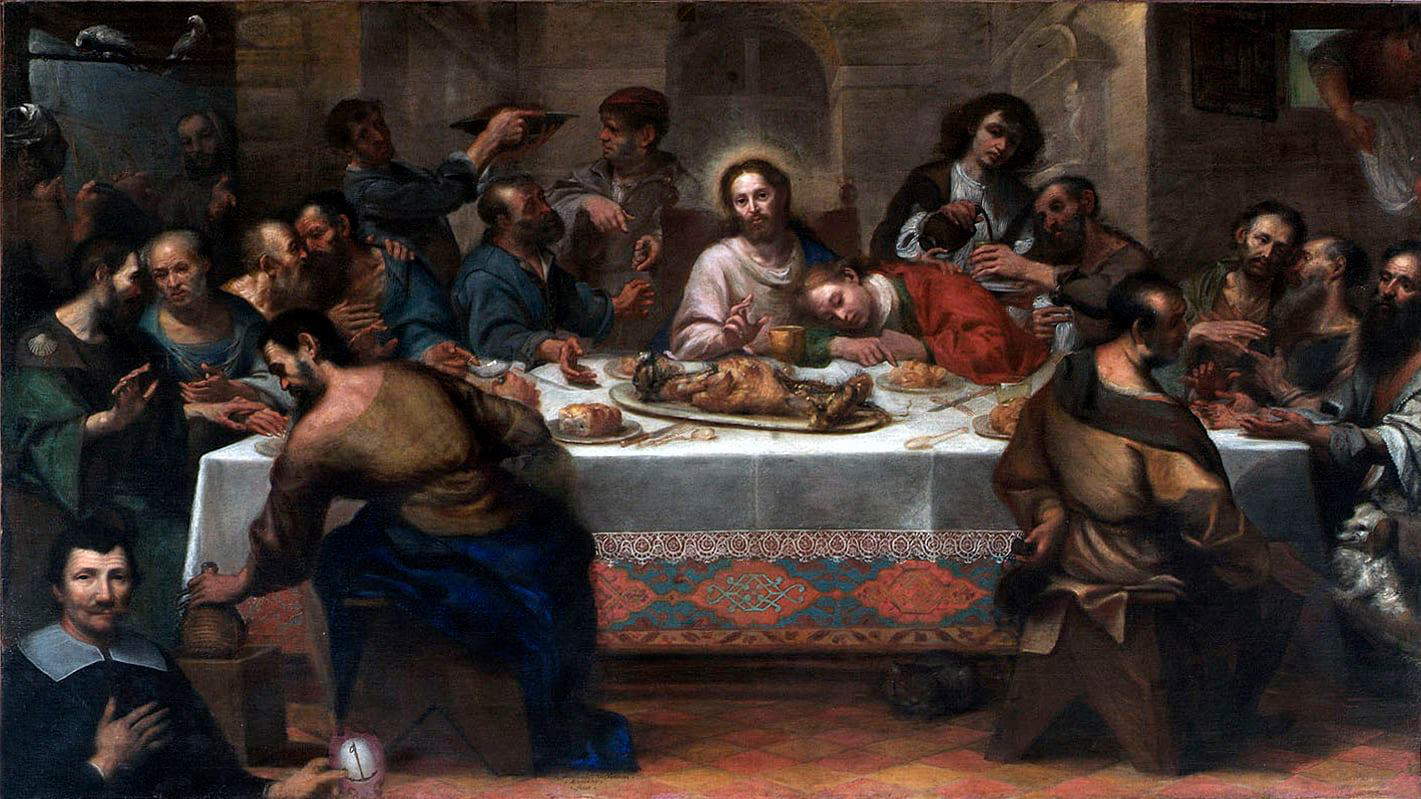
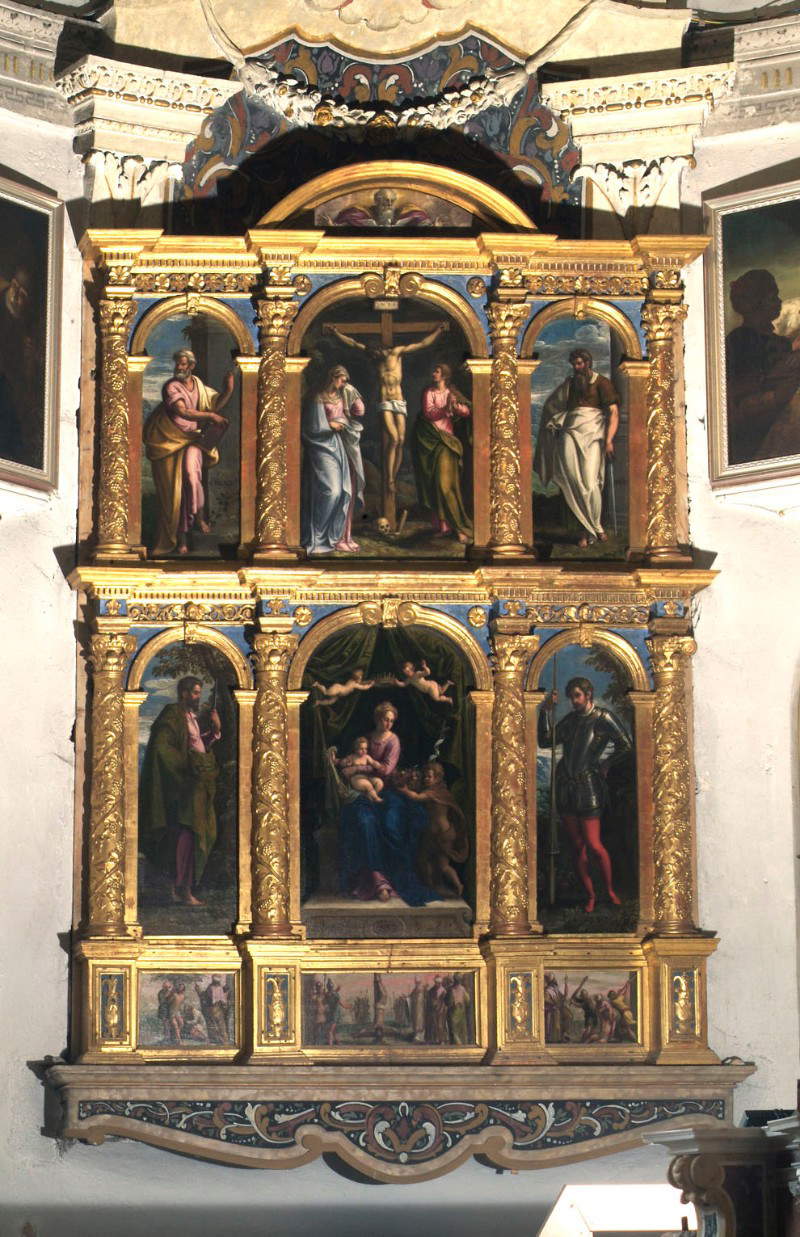
Tiarno di Sopra and Tiarno di Sotto were the main centers of pitch production in the Ledro Valley. This thick, sticky substance, obtained from the resin of the Scots pines that abound in the forests around the two towns, bubbled in the valley’s ovens, gushed from the collieries and was collected in vessels that reached Venice by mule from the steep mountain roads. La Serenissima also built its fortunes on the labor of the Ledro Valley’s sheep farmers who sweated daily between woods and ovens, and in turn it could count on a great deal of Ledro’s laborers who left the villages around the lake and went down to Venice to work. Other valley dwellers, however, took advantage of these economic ties to trade with the capital of the Republic. Simone Sala, for example: it was he, with his brother Bortolo, who commissioned the altarpiece with the Madonna in Glory from Bernardo Strozzi, and who paid the Ligurian painter a “magno pretio,” we learn from documents, to donate it to the church in his native village, to show the villagers where he had come from. And to want his and Bortolo’s portrait to stand under the effigy of the Madonna: a unique case in the entire production of the Genoese artist. They are the only patrons of Tiarno’s works of whom there is a living memory left. Of others, such as the commissioner of Valdambrini’sLast Supper , a portrait has remained, but we do not know the name. Others, however, have become entangled in the pitch of history. We must imagine, however, that the Ledro enclave in Venice was lively, active, noisy: the Trentino people were one of the densest communities in the Serenissima, and scanning through historical documents, typical Ledro Valley surnames are attested with good frequency.
Then, with the decline of the Republic, so too ended the prosperity of the valley, which returned to being a place on the fringes of history. For many years, between the 19th and 20th centuries, the Ledro Valley would also become a land of emigration. Prosperity would return only in the postwar period, later than in the rest of Italy, first with the spillover effects of the industrial development of Trentino, favored by its location, close to the large cities of northern Italy and projected toward Germany, and then with the start of tourism, which today is one of the valley’s first and most valuable economic resources. Tourism is today what once was pitch, what once was the trade that the valley entertained with Venice, an echo of those fortunes that the wealthy people of Ledro four centuries ago wanted to show off before their countrymen by showering the churches of the two masterpiece villages with magnificent works of art. There is also this story, the story of the wealth and enterprise of an entire valley, hidden among those brushstrokes.
Warning: the translation into English of the original Italian article was created using automatic tools. We undertake to review all articles, but we do not guarantee the total absence of inaccuracies in the translation due to the program. You can find the original by clicking on the ITA button. If you find any mistake,please contact us.